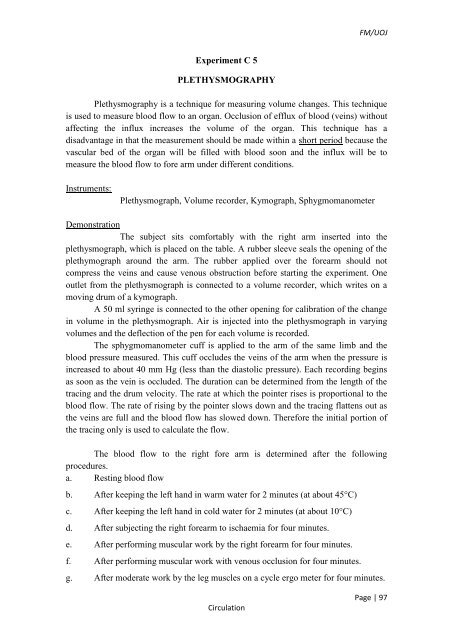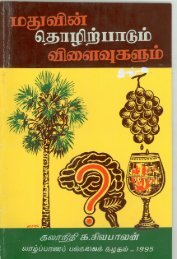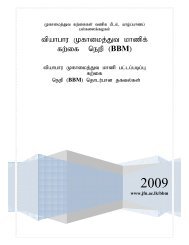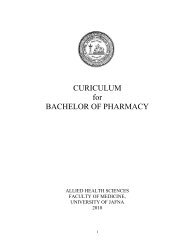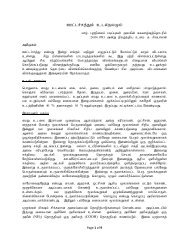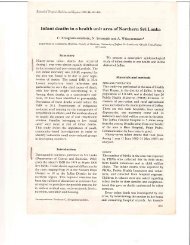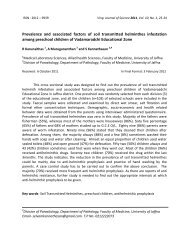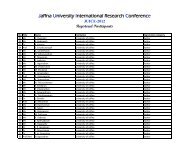MANUAL PHYSIOLOGY PRACTICAL - Repository:The Medical ...
MANUAL PHYSIOLOGY PRACTICAL - Repository:The Medical ...
MANUAL PHYSIOLOGY PRACTICAL - Repository:The Medical ...
You also want an ePaper? Increase the reach of your titles
YUMPU automatically turns print PDFs into web optimized ePapers that Google loves.
FM/UOJ<br />
Experiment C 5<br />
PLETHYSMOGRAPHY<br />
Plethysmography is a technique for measuring volume changes. This technique<br />
is used to measure blood flow to an organ. Occlusion of efflux of blood (veins) without<br />
affecting the influx increases the volume of the organ. This technique has a<br />
disadvantage in that the measurement should be made within a short period because the<br />
vascular bed of the organ will be filled with blood soon and the influx will be to<br />
measure the blood flow to fore arm under different conditions.<br />
Instruments:<br />
Plethysmograph, Volume recorder, Kymograph, Sphygmomanometer<br />
Demonstration<br />
<strong>The</strong> subject sits comfortably with the right arm inserted into the<br />
plethysmograph, which is placed on the table. A rubber sleeve seals the opening of the<br />
plethymograph around the arm. <strong>The</strong> rubber applied over the forearm should not<br />
compress the veins and cause venous obstruction before starting the experiment. One<br />
outlet from the plethysmograph is connected to a volume recorder, which writes on a<br />
moving drum of a kymograph.<br />
A 50 ml syringe is connected to the other opening for calibration of the change<br />
in volume in the plethysmograph. Air is injected into the plethysmograph in varying<br />
volumes and the deflection of the pen for each volume is recorded.<br />
<strong>The</strong> sphygmomanometer cuff is applied to the arm of the same limb and the<br />
blood pressure measured. This cuff occludes the veins of the arm when the pressure is<br />
increased to about 40 mm Hg (less than the diastolic pressure). Each recording begins<br />
as soon as the vein is occluded. <strong>The</strong> duration can be determined from the length of the<br />
tracing and the drum velocity. <strong>The</strong> rate at which the pointer rises is proportional to the<br />
blood flow. <strong>The</strong> rate of rising by the pointer slows down and the tracing flattens out as<br />
the veins are full and the blood flow has slowed down. <strong>The</strong>refore the initial portion of<br />
the tracing only is used to calculate the flow.<br />
<strong>The</strong> blood flow to the right fore arm is determined after the following<br />
procedures.<br />
a. Resting blood flow<br />
b. After keeping the left hand in warm water for 2 minutes (at about 45°C)<br />
c. After keeping the left hand in cold water for 2 minutes (at about 10°C)<br />
d. After subjecting the right forearm to ischaemia for four minutes.<br />
e. After performing muscular work by the right forearm for four minutes.<br />
f. After performing muscular work with venous occlusion for four minutes.<br />
g. After moderate work by the leg muscles on a cycle ergo meter for four minutes.<br />
Circulation<br />
Page | 97


